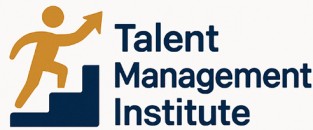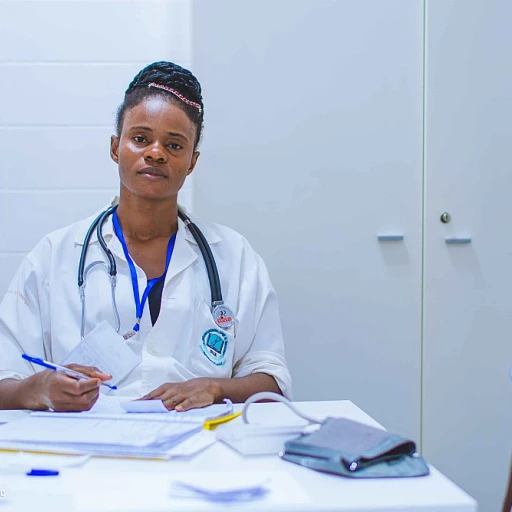
Understanding the Importance of Development Goals
The Significance of Well-Designed Development Goals
Development goals play an instrumental role in both personal and professional growth, serving as integral components of talent management strategies. When employees engage in goal setting, they focus on acquiring skills that bolster their career path and contribute to organizational success. Organizations benefit when employees set these goals, as the alignment with the wider company objectives ensures that personal development aligns with the business's strategic direction. For instance, focusing on enhancing communication skills can improve team efficiency and leadership communication. Similarly, developing technical skills may lead to improved project management capabilities, ultimately benefiting the organization's bottom line. From an employee's perspective, development goals offer opportunities for career advancement, professional development, and improved problem solving. They help employees to identify specific areas of growth, whether it be enhancing public speaking abilities, honing time management skills, or excelling in management roles. Establishing clear, realistic, and achievable goals requires careful consideration and strategic planning. It's important to consider short-term aims, like immediate skills enhancement, alongside long term objectives that drive overall professional growth. Furthermore, understanding potential challenges and measuring the impact of these goals on both the individual and organization will ensure their effectiveness. Ultimately, investing time in setting development goals is crucial for nurturing talent, fostering a culture of continuous learning, and facilitating both personal achievement and organizational advancement.Aligning Development Goals with Organizational Objectives
Linking Individual Development Goals with Company Objectives
Aligning development goals with organizational objectives is crucial for both personal and professional growth. When employees set development goals that resonate with the wider mission of their organization, their efforts contribute more directly to overall success. Here's how:- Engagement and Motivation: Employees who understand how their personal development aligns with company goals are typically more invested in their work. This alignment enhances job satisfaction and motivates individuals to excel, leveraging their communication skills and technical skills to achieve desired outcomes.
- Enhanced Problem-Solving: When development goals address both personal and company needs, employees can improve their problem-solving abilities effectively. They gain a better understanding of the challenges faced by the organization, allowing them to provide innovative solutions that support business objectives.
- Improving Skills for Career Advancement: Aligning goals with company objectives helps employees focus on acquiring management skills and leadership qualities that are vital for career growth. For instance, setting goals around project management can provide opportunities for employees to step into leadership roles, fostering both personal and team development.
- Tailored Learning Opportunities: Organizations that align employee development with their objectives tend to offer educational opportunities that enhance relevant skills. Whether it’s about improving time management or mastering public speaking, aligning goals creates pathways for professional growth that meet both employee and organizational needs.
- Efficient Resource Allocation: When personal and professional goals intersect with organizational priorities, management can allocate resources more effectively. This ensures that training and development programs are targeted and beneficial, improving efficiency across teams.
Examples of Development Goals for Different Roles
Illustrative Examples of Effective Development Goals
Creating tailored development goals is crucial for fostering talent management within organizations. Here are examples for different roles that emphasize both professional growth and aligning with business objectives.- Managerial Roles: Managers play a pivotal role in guiding their teams. Thus, development goals often encompass enhancing leadership skills, improving time management, and honing project management competencies. A practical goal could be enrolling in a leadership training program to strengthen managerial skills, thereby effectively steering the team towards strategic objectives.
- Technical Positions: Employees in technical roles, such as IT specialists or engineers, may focus on enhancing specific technical skills—be it coding languages or operational systems. For instance, setting a goal to earn a certification in a new programming language can help in staying updated with technological trends, fostering both personal and professional development.
- Sales and Marketing: Goals for those in sales and marketing may revolve around improving communication and public speaking skills. These individuals could aim to attend workshops or participate in networking events to boost their ability to connect with clients, which in turn supports increased sales numbers and customer engagement.
- Customer Service: In customer service, developing strong problem-solving abilities and effective communication skills is essential. Employees might pursue training sessions aimed at enhancing these capabilities to ensure customer satisfaction and loyalty.
- Administrative Roles: For administrative personnel, personal development goals might consist of advancing in time management or software skills to ensure efficient workflow management. Setting a goal to master a new office software application can lead to streamlined administrative processes.
Setting SMART Development Goals
Designing Goals that are S.M.A.R.T.
Crafting effective development goals for employees requires a structured approach to ensure they are both attainable and beneficial. One widely used method is the S.M.A.R.T. model, which stands for Specific, Measurable, Achievable, Relevant, and Time-bound. Here's how to apply these principles when setting professional development goals.- Specific: Clearly define what is to be achieved. Aiming for "improved communication skills" is too vague. Instead, pinpoint a specific area such as "enhance public speaking abilities to confidently present in front of an audience." This clarity provides a direct focus for the employee and allows them to understand exactly what is expected.
- Measurable: Determine how you will track progress and know when the goal is completed. For instance, measure the goal by attending a certain number of public speaking workshops or achieving a set score on a communication skills assessment.
- Achievable: Ensure the goal is realistic given the employee's current workload, skill level, and available resources. While ambition is important, setting a target too high may lead to frustration rather than growth. Consider what is possible within the constraints of their role and daily responsibilities.
- Relevant: The goal should align with both the individual's personal development ambitions and the broader organizational objectives. For example, if an employee is aiming for career advancement, a goal focused on developing leadership skills can contribute to long-term professional growth while supporting the team's objectives.
- Time-bound: Set a realistic timeframe for achieving the development goals. This helps in maintaining momentum and focus. Specify deadlines like "complete within the next six months," allowing both the employee and management to allocate time and resources effectively.
Overcoming Challenges in Development Goal Setting
Navigating Challenges in Setting Development Goals
Establishing development goals for employees can be a rewarding process but it comes with its own set of challenges. Organizations aim to nurture skills and facilitate professional growth, aligning short-term objectives with long-term career goals. However, a few common hurdles can complicate this process in talent management.
First, misalignment between employees’ personal development interests and organizational objectives can arise. When these goals do not sync, motivation can subside. Ensuring that both managerial and employee development goals are congruent with the organization’s larger mission can mitigate this issue.
Secondly, time constraints and workload pressures often impede setting realistic goals. Balancing project management tasks and learning opportunities requires robust time management skills. Encouraging team leaders to allocate specific periods for professional development can help integrate these initiatives into daily work.
Moreover, setting goals without measurable outcomes is another pitfall. Clarity and precision are essential in this regard, often through the use of SMART criteria, which focus on specific, measurable, achievable, relevant, and time-bound objectives.
Additionally, resistance to change can emerge as employees may be hesitant to step out of their comfort zones. Promoting a culture of continuous learning and adaptability can encourage employees to embrace professional growth.
Lastly, inadequate communication skills or lack of leadership support may lead to unclear objectives. Effective communication and leadership are crucial in facilitating employee development and guiding goal-setting processes.
By addressing these challenges, organizations can bolster employee development and career advancement, enhancing both individual and corporate success. Providing support through robust management frameworks and practical opportunities empowers employees to improve their technical and professional skills, paving the way for sustained growth.
Measuring the Impact of Development Goals
Effectively Assessing the Impact of Development Objectives
Measuring the success of development goals is crucial for ensuring both individual and organizational growth. Focus on assessing the impact of these goals through several strategies:- Utilize Key Performance Indicators (KPIs): Align metrics with organizational objectives to gauge progress. Consider how employees' improved skills contribute to overall company success. For instance, successful project management can be a valuable indicator of development effectiveness.
- Conduct Periodic Reviews: Regular evaluations provide insight into employees' professional growth. Feedback, peer evaluations, and self-assessments can help identify areas needing improvement, such as communication skills or technical expertise.
- Monitor Behavior Changes: Look for observable changes in employees' work habits and attitudes. These changes might include improved time management or enhanced problem-solving abilities, both indicative of development goal achievement.
- Engage in Continuous Learning Feedback Loops: Encourage ongoing dialogue about professional development and personal goals between management and team members. This communication fosters learning opportunities and helps refine goal-setting processes.
- Assess Long-term Career Advancement: Evaluate employees’ career progression as a measure of development success. Promotions and increased responsibilities may reflect the alignment of development goals with career aspirations.











